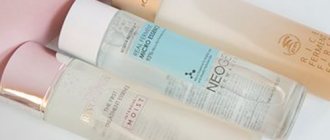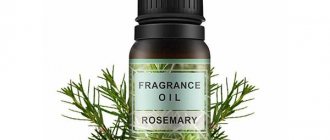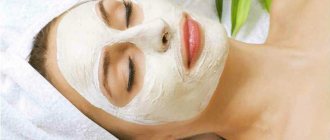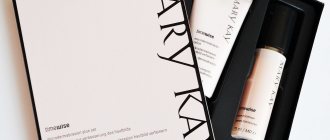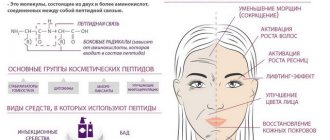When we talk about the Japanese system of facial care, we involuntarily imagine a whole complex of measures for cleansing the skin, consisting of more than 10 stages of cleansing, a lot of time spent, and that’s just on washing. However, the Japanese know how to maintain delightfully smooth and even skin. Japanese women are very meticulous about facial care, so the procedure takes them several hours every day. In addition, nothing can stop a Japanese woman from skipping, simplifying or reducing the time for this procedure.
Typically, Japanese women use a 5-step care system. Unlike Western facial care technology, the distinctive characteristic of the Japanese system is the use of dense foam cleansers, deep cleansing products with a rich bubbling effect.
An interesting video from a blogger about Japanese facial care!
Washing your face the Japanese way
An integral part of the Japanese facial care ritual is washing. This process consists of 2 stages: removing makeup and washing your face. At first glance, this procedure is no different from European facial care, but instead of the usual foams, milks and gels, Japanese women use completely different products : hydrophilic oil to remove makeup and thick foam to cleanse pores. The oil helps remove a thick layer of makeup without much effort, and it does not dry out the dermis. Foam effectively removes impurities not only from the surface of the epidermis, but also inside the pores. The thick foam can be compared to a scrub; the main advantage of this product is gentle cleansing without stretching or damaging the dermis.
We will look at the step-by-step process of washing in Japanese below:
We remove cosmetics with hydrophilic oil . It is not necessary to look for the named oil made in Japan. European companies also produce many brands of hydrophilic oils, which can be easily found in a cosmetic store. The named product, upon contact with water, transforms into a milk-emulsion, which after rinsing does not leave a greasy layer. Using the oil is easy: pour about 15 ml of the product into your hand, rub it in your palms and apply to your face. The makeup will begin to dissolve and disappear. Now wet your palms in warm water and continue to cleanse your skin in a circular motion. There is no need to fill your palms with water and wash off the oil with copious amounts, just periodically wet your hands with running water. Hydrophilic oil will also help remove waterproof cosmetics.- We wash ourselves with foam . To carry out this stage, you need to form a thick, dense foam that will eliminate any remaining oil and cosmetics. To create foam you will need any foaming agent. Japanese women use a drop of their favorite cosmetic cleansing product, which turns into a thick lump of foam, similar in density to shaving foam, and nylon mesh, which in a couple of moments creates the desired structure of the cleanser. Sometimes Japanese girls put foam rubber in the mesh bowl, which speeds up the process of creating foam. Instead of a mesh, you can use a regular brush. Apply the foam to your face slowly, and your fingers should not touch the skin. Now, with light movements, begin to “drive” the foam into the dermis; the duration of the described action should be at least 3 minutes. After the foam loses its elasticity, you can wash your face with plenty of water at a comfortable temperature.
According to the described instructions, Japanese women wash their faces both in the morning and in the evening. If you want to treat or prevent acne, irritation or dry skin, use the Japanese two-step method to cleanse your face every day.
Exfoliate gently
After two-stage cleansing, you need to get rid of dead cells and clean your pores once a week. It is better to avoid brushes and scrubs with large particles - they are aggressive to the skin.
Japanese women love soft products in the form of gels with natural ingredients: berry or fruit seeds, sugar, crushed rice.
They provide gentle exfoliation and do not cause irritation.
For the most sensitive skin, there are gommages and foams without visible scrubbing particles. When you begin to gently rub the product into your dry face, it binds to the sebaceous secretion released from the pores. Small balls are formed that exfoliate the top layer of the skin. These gommages can be used up to two times a week without fear of microtrauma.
- How to make rips on jeans
- How to freeze bell peppers for the winter
- Homeopathy - what is it?
Comprehensive facial care in Japanese
The secret of Japanese women's even skin tone lies in the multi-layer application of care products. This facial care technique is called layering, which translated means layering, layering. We will tell you below what products Japanese women use for facial care.
- 1st layer - hydrophilic oil and foam. First of all, Japanese women cleanse their skin of cosmetics and free their pores from impurities. We described the detailed process of washing using the above-mentioned products above.
- 2nd layer – serum (or any concentrate). The selected cosmetic product should be rubbed in your palms and lubricated with clean, dry skin of the entire face. Thanks to its light structure, the serum is quickly absorbed into the epidermis and does not leave any traces behind.
- 3rd layer – cream for the skin around the eyes. Apply the cosmetic product to the lower eyelid and, using your ring finger, distribute it from one edge of the eye to the other.
- 4th layer – cream for wrinkles (or prevention of their occurrence). The cream should be applied to those areas where wrinkles most often form (corners of the eyes, nasolabial folds and forehead).
- Layer 5 – serum to moisturize the epidermis. With this product, the skin receives the necessary amount of moisture. The serum needs to be heated in your palms, and then applied with tapping movements to the entire surface of the face.
- Layer 6 – skin softening cream. Apply the cream to the fingertips, rub and apply to the face using tapping movements (they must be done with the palms). The main task of this product is to retain moisture, so after application an invisible film will appear on the skin. Also, an emollient cream should be applied to the neck.
- Layer 7 – lip balm. To protect your lips from drying out and cracking, lubricate them with balm. There is no point in using hygienic lipstick, because... it creates a protective film on the skin, but does not have any therapeutic effect.
- Layer 8 – cream base. To fix all the applied products you will need a cream base. It will prolong the effect of all the above cosmetic products and give the dermis radiance.
Twice a week, Japanese women apply homemade masks to their faces. After washing, they apply a hot towel to their face, which opens up the pores. After this, a mask is applied to the skin and left for the required amount of time. After washing off the composition, Japanese beauties continue to apply all the above layers of care products.
Moisturize your face and around your eyes with creams
To maintain smoothness and tone, use products with fatty acids and plant extracts: aloe, camellia flower, lily or wild rose. Choose a product depending on your skin type: dry skin needs thick creams, combination skin needs a light gel.
Japanese moisturizers control the functioning of the sebaceous glands.
The result can be seen in 1–1.5 months.
For the area around the eyes, lighter water-based creams are used that do not overload thin skin. Many of them contain collagen, algae or hyaluronic acid. These components restore hydrolipid balance, eliminate dark circles, and reduce the depth of wrinkles.
- Duphalac - instructions for use for adults and children
- The battery on Android is draining quickly - what to do. Reasons and how to increase battery power for Android
- Kohlrabi salad - recipe with photo
Features of Japanese facial care
We invite you to familiarize yourself with 7 features of facial care according to the Japanese system.
- Native Japanese women have a denser and more porous skin structure, prone to excessive secretion of subcutaneous secretions. The main dermatological problem for Japanese women is enlarged pores, which need to be constantly cleaned and masked. As a base for makeup, Japanese women use grouts that even out the skin and hide its imperfections.
- Japanese women do not use cheap care products; they prefer to make them themselves or purchase them from trusted sellers. Women of this country always look at the composition of the chosen cosmetic product and opt for those products that contain oils, herbal and natural ingredients.
- In Japan, one of the most popular ingredients in homemade beauty products is rice. It reduces the production of melanin, which gives the skin a pale porcelain tone and removes its natural yellowness. In addition to rice, Japanese women use seaweed, various oils, apple cider vinegar, clay, oatmeal, herbal preparations, etc.
- All Japanese cosmetics have a light fluid structure. It helps keep the skin smooth and prevents the appearance of oily shine.
- All Japanese cosmetics are applied strictly along massage lines. Such actions prevent the occurrence of early expression wrinkles and increase skin elasticity.
- Before leaving the house, Japanese women always apply sunscreen to their skin to prevent the appearance of wrinkles that arise due to the harmful effects of ultraviolet radiation.
- Cosmetics and care products created in Japan are designed for the skin type and structure of local residents, so they are not suitable for European women. For some time now, Japanese manufacturers have been producing cosmetic products for the care of various skin types. If you want to try Japanese cosmetics, then carefully study its composition and purpose.
Japanese facial skin care is a very expensive undertaking that requires not only time, but also financial investment. If you want to have young, radiant and healthy skin, then do not skimp on care products and choose only those cosmetic products that match the type, age and characteristics of your epidermis.
Childhood on a farm
Chizu grew up in a dysfunctional, fatherless family on a farm in Koga, Shiga Prefecture, where she spent most of her childhood in the care of her grandparents, who raised her with love and respect for work and nature. Then, she moved to Osaka to live with her aunt and worked in a restaurant, where she learned the first truth - most women can barely earn enough for food and housing, let alone cream and cosmetics. At that time, young Saeki already had her own clear ideal of female beauty in the person of Audrey Hepburn (British actress, model and humanitarian. She received an Oscar in 1954 for Best Actress in the film “Roman Holiday”).
Gathering her strength, the young Japanese girl wanted to do everything possible to get out of the vicious circle of poverty, so she decided to acquire practical skills that would allow her to live independently of the world in which her aunt and most Japanese women lived. To this end, she received a license as a cosmetologist and began working in a beauty salon in Tokyo, getting closer to her ideal.
However, she did not have time to fully realize her skills, as she met Arinori, a planetary equipment development engineer, because of whom Saeki temporarily retired. Arinori was the real man of her dreams, unlike either her father or those prodigal men in the restaurant.
In 1984, 15 years after they married, the couple's happy life was shattered when Arinori was diagnosed with terminal lung cancer. Despite Saeki's devoted care, Arinori unfortunately died and her life fell apart. Saeki was grieving the loss; for almost a year she was deeply depressed, starving herself and not paying attention to her health, gradually fading away.
The lifeline for the woman was her friend, who did not feel sorry for Saeki, but directly pointed out how terrible she looked. Shocked by a dose of reality, Saeki immediately decided to “get back on her feet.”
The first thing she did was try to restore her face. By this time, her skin had lost its elasticity, and black bruises and bags had formed under her eyes. To solve this problem, she used skin care routines that she had taught other women for years. This was a turning point in her life and she became convinced that skin care begins and ends with willpower.
Today, Japan's most famous beauty advisor lives a busy and energetic life, giving lectures across the country and appearing on television to give advice not only on skin care, but also as a psychologist.
In addition, Saeki actively writes books and memoirs. The most famous and a must-read for every woman who wants to be beautiful is The Japanese Skincare Revolution, which is full of simple, practical tips on skincare methods now called Saeki-type routines.


